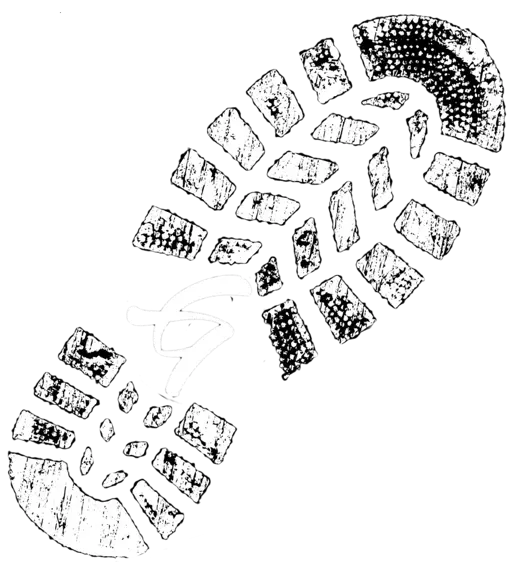Ministik Hike to My 'Grassy Fields' Cache and Return
Geocaching was the lure that brought me out onto the trails, but as is often the case, that initial intention faded in my consciousness as the experience of simply being on trails in early fall flooded my senses.
Yellow leaves have already begun to rain down and carpet the U of A Access Road. There’s a sense that plant life is pivoting towards dormancy as temperatures drop and winter approaches.
Despite that, I still see the odd dragonfly flitting and darting just above the ground in front of me. Once in the adult stage, most dragonflies live only a few weeks or months at best, so the ones I’m seeing today won’t survive the winter. That said, it’s the fact they’re still here at all and zipping around with such energy and finesse that sparks joy in the moment.
Geocache Finds#
One of these new hides was “Red Chair Lookout” named for the nearby lookout at Williams Lake where a red folding chair sat for years. You can read more about it in a post on this site. Unfortunately, the original red chair disappeared just over a year ago. Its absence was strangely unsettling because it had been such a fixture at the lookout.
The Red Chair is dead; long live the Red Chair! A geocaching buddy undertook a personal mission of replacing loss by finding a similar folding chair at a thrift shop, spray-painting it red and installing it at the lookout. Good on him I say!
Hoof Fungus & Amadou#
Today along the road I noticed the fairly common sight of “hoof fungus” on various trees and resolved to learn more about them. Here are the results of some of that learning:
What I’m calling “Hoof Fungus” is just one of the many common names for Fomes fomentarius which is variously called “tinder fungus”, “tinder conk” or even “ice man fungus” because the 5,000-year-old Ötzi the Iceman found in Austria was carrying four pieces of the fungus, probably to serve as tinder for his camp fires.
Spores of this fungal parasite attach directly to the bark of trees usually on wounds on older trees. Gradually root-like mycelia secure the fungus to the tree and each year it grows at the bottom of the “fruit bodies” - what we see on the side of the tree. The fungus can survive up to 30 years and continues to find nourishment even after the tree host has died.
“Hoof fungus” is best known for the layer of material just under the hard outer layer that we see. That layer is called “amadou”. Click the tab above to learn more.
Just inside the outer layer of the fungus is a layer of distinctive flesh called “amadou”, a name that comes from the “middle French” meaning tinder, or kindling.
This YouTube video demonstrates the use of amadou as tinder and as a tinder bundle.
As the name suggests, amadou is best known for its use as tinder, and “was a precious resource to ancient people, allowing them to start a fire by catching sparks from flint struck against iron pyrites.” (Source: Wikipedia) It has proven to be useful in many other ways by cultures all over the world: as a wound dressing, or as a disinfecting inflammatory. It was used by bee keepers to produce a thick smoke to calm bees and in more modern times as way to dry flies while fly fishing. (Source)
(Photo by Paul Kirtley)
Here are some informative web pages about “Hoof fungus” and amadou:
- A Legend Reborn
- Fire - How to Make Amadou Tinder And here are a few YouTube videos full of information about “Hoof fungus” and amadou:
- This Ice-Man Knew About the Hoof Fungus - Do You?
- Paul Stamets in French Alps discussing Amadou Fomes fomentarius
A series of two videos showing amadou preparation and use in the field
Big Grassy Fields#
On the way to “Big Grassy Fields”, I looked in on another of my hides, “Penny Lane” and even after a pretty long search couldn’t find it. Sheesh. I think it might have been knocked from its hiding spot by other trees falling on it, but I’m not sure. Now I knew I had to disable the cache listing and return to hide a new container in the future. It’s just another excuse to come back and walk these trails again.
Go Fish!#
After replacing the “Big Grassy Fields” container I started on the return leg, this time on alternate paths so that I could check up on another of my hides: “Go Fish!”. I found the cache, but it was in a state of serious disrepair. It’s obvious a coyote had been playing with the container, which I found open and the logbook inside the “ziplock” bag was completely soaked and unusable. Now I knew two of my hides had to be temporarily disabled and replaced: such is life.
My work and play for the day was done. All that was left was to make my way slowly but surely back to the parking spot. On the way, I savoured the opportunity to experience such pleasant surroundings free of clouds of bugs which can torment the mind during summer outings and free of drifts of snow which can torment the legs in winter.
My Route Today#
Gallery#

